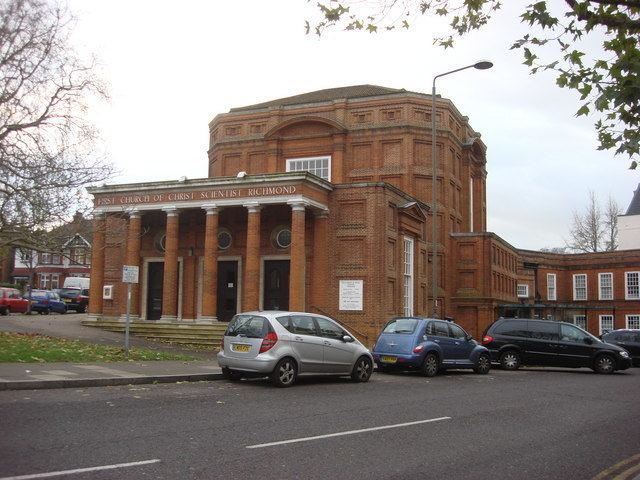 | ||
Structures First Church of Christ, Scientist, Richmond | ||
William Charles Braxton Sinclair RE FRIBA (who styled himself W Braxton Sinclair) was a British architect who worked in the 19th and 20th centuries in the United Kingdom and in Burma, where he was a captain in the Royal Engineers. He was also a local historian.
Contents
Army service
Sinclair joined The Essex Regiment and was promoted to 2nd lieutenant in 1907 in the 3rd Battalion and lieutenant in the 6th Battalion in 1910. As lieutenant, he served with the regiment in the First World War and as a captain in the Royal Engineers in the Second World War. Three photographs associated with his war service are held at the National Army Museum.
Works
His works include:
In 1913 Sinclair restored the tower at Holy Cross Church in Greenford, north-west London.
In 1950 he extended the neo-Georgian flats that had been built in 1937 in Chesterfield Gardens in Greenwich.
His design of a sophisticated air raid shelter for flats at Queen's Gate, in South Kensington, London, was published in The Builder in October 1938.
Publications
While briefly stationed in York during the Second World War, Sinclair, who was a Georgian Group member, wrote notes which, revised by the Society's architects, became the first publication of the York Georgian Society, Some Hints on the Maintenance and Repair of 17th and 18th Century Premises (1945).
Legacy
Sinclair bequeathed, to the Victoria and Albert Museum, four Burmese pictorial textile hangings known as kalagas. The museum also holds three watercolours by Sinclair, two showing Burmese landscapes and one of a Burmese pagoda. After his death Mrs Mary Simpson donated on his behalf, to the Victoria and Albert Museum, an 18th- or 19th-century wooden and lacquered sculpted figure of the Buddha Shakyamuni.
